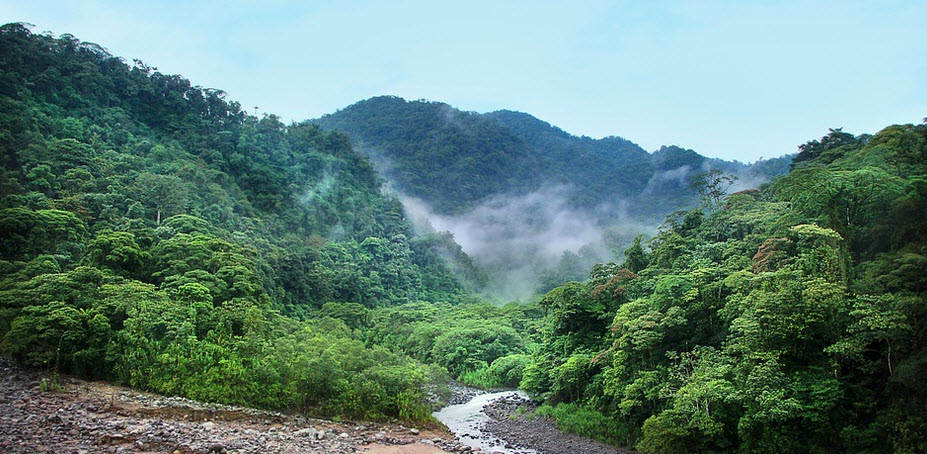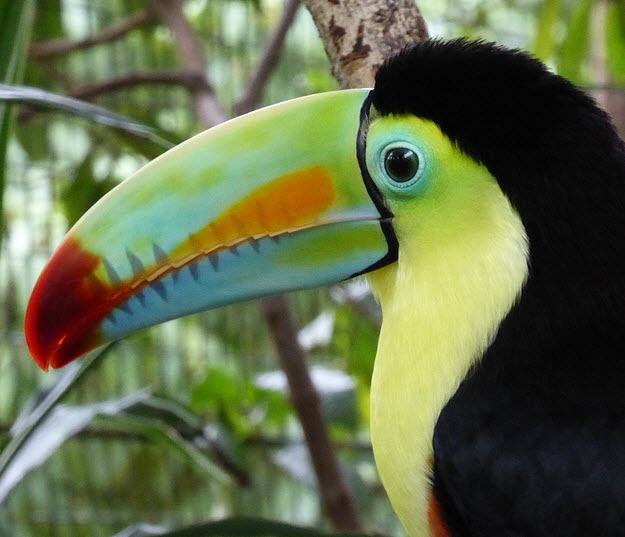In this travel guide
Costa Rica in Central America is renowned for its stunning natural beauty, biodiversity, and commitment to conservation. This peaceful nation, bordered by Nicaragua to the north, Panama to the southeast, the Pacific Ocean to the west and south, and the Caribbean Sea to the east, offers travelers an unparalleled eco-tourism experience.
In my opinion, its motto, “Pura Vida” (Pure Life), perfectly encapsulates the country’s approach to embracing a life of appreciation and conservation. Costa Rica’s commitment to conservation despite onging challenges, combined with its natural beauty and adventure opportunities, makes it a top destination for eco-conscious travelers and nature enthusiasts. Whether exploring its rainforests, relaxing on its beaches, or engaging with local cultures, Costa Rica has given me a true pura vida experience.
Here is my guide for travelers seeking to explore the rich landscapes and vibrant cultures of Costa Rica.

My top-four favourite National Parks and Reserves in Costa Rica
Costa Rica is home to numerous national parks and reserves, each showcasing diverse ecosystems. These are my four favourites:
- The Monteverde Cloud Forest Reserve offers misty landscapes and the chance to see quetzal birds.
- Tortuguero National Park, accessible only by boat or plane, is a crucial nesting site for sea turtles and a haven for birdwatching.
- Manuel Antonio National Park combines dense rainforest with stunning beaches.
- Corcovado National Park is considered one of the most biodiverse places on earth.
Practical travel information
Best time to visit: The dry season from December to April is the most popular time to visit, offering sunny weather ideal for exploring. The rainy season (May to November) can bring afternoon showers but also fewer crowds and more lush landscapes. Personally, as a frequent visitor, I have grown to prefer the ”lush season”. Having a few showers in the afternoon or night is worth it, when it means getting to enjoy a much greener landscape and fresher air.
Getting around: Costa Rica’s public transportation system, including buses and domestic flights, is an efficient way to travel between major destinations. Car rentals offer more flexibility but require navigating sometimes challenging roads.
Safety: Costa Rica is considered one of the safest countries for tourists in Latin America. However, visitors should take standard precautions and stay informed of current travel advice.
Language: Spanish is the official language, but English is widely spoken in tourist areas.
Volcanoes
The country’s volcanic landscape is, understandably, a big draw for visitors. Arenal Volcano, one of the most iconic, features hot springs and hiking trails with views of the active crater. Poás and Irazú volcanoes offer striking crater lakes and panoramic views. These are just a few examples – all of Central America is a highly seismic region and Costa Rica is home to numerous volcaoes.
Beware: You may experience an earthquake during your stay in Costa Rica, so read up on recommended safety routines before you arrive.
Examples of volcanoes (both active an non-active) in Costa Rica
- Arenal 1,670 metres (5,480 ft)
- Barva 2,906 metres (9,534 ft)
- Cacho Negro 2,150 metres (7,050 ft)
- Chopo 402 metres (1,319 ft)
- Congo 2,014 metres (6,608 ft)
- Irazú 3,432 metres (11,260 ft)
- Miravalles 2,028 metres (6,654 ft)
- Orosí 1,659 metres (5,443 ft)
- Platanar 2,183 metres (7,162 ft)
- Poás 2,708 metres (8,885 ft)
- Porvenir 2,267 metres (7,438 ft)
- Rincón de la Vieja 1,916 metres (6,286 ft)
- Tenorio 1,916 metres (6,286 ft)
- Tortuguero 119 metres (390 ft)
- Turrialba 3,340 metres (10,960 ft)
- El Viejo 2,122 metres (6,962 ft)
Arenal Volcanoe National Park
Arenal Volcano National Park (Parque Nacional Volcán Arenal) is a part of the wider Arena Huetar Norte Conservation Area.
The Arenal volcanoe is the most active volcano in Costa Rica. It was not considered much of a threat in the past, because there were no eruptions for centuries, but then a major eruption occured in 1968 and that was the start of a new period of Arenal being very active. During the 1968 eruption, the town Tabacón was destroyed and three new creaters were formed on the western flank of Arenal (only one of them remains today).
The Arenal Volanoe National Park is not only famous for the volcanoe; it is also a biodiversity hotspot and it neighbors Lake Arenal. A lot of the electricity used in Costa Rica comes from the Lake Arenal hydroelectric project.
Over 850 species of birds have been reported from the park and it is a popular destination for bird watchers. Examples of other animals that live here are jaguars, coatis, and white-faced capuchin monkeys.
In addition to Arenal, there is a second volcanoe within the park, but it is not active and the crater has filled with water, forming i beautiful crater lake. The volcanoe has been inactive for roughly 3,500 years and is referred to as Cerro Chato (Mount Chato) rather than a volcanoe.
The Arenal Huetar Conservation Area
As mentioned above, the park is located within the larger Arenal Huetar Conservation Area.
Access
Most visitors arrive to the park via La Fortuna, but Tilarán or the northern shore of Lake Arenal also work well.
Accommodations
Various types of accomodations, including lodges, are located around the park. Some are found adjacent to hot spings.
Beaches
Costa Rica’s extensive coastline boasts some of the most beautiful beaches in Central America. From the surf-friendly waves of the Pacific coast’s Tamarindo and Santa Teresa to the laid-back Caribbean vibes of Puerto Viejo and Cahuita, there’s a beach for every type of traveler.
Adventure and activities
Costa Rica is a playground for adventure seekers. Zip-lining through the canopy of the rainforest, whitewater rafting on the Pacuare River, surfing along the coast, and diving or snorkeling in the clear waters are just a few of the activities that attract visitors. Hiking, bird watching, and wildlife tours offer more serene ways to connect with nature.
Culture
Cultural experiences might include visiting the Pre-Columbian Gold Museum in San José, exploring the colonial architecture of cities like Heredia and Cartago, or engaging with local communities to learn about Costa Rica’s indigenous heritage and contemporary life.
Cuisine
While nature is undoubtedly the main attraction, Costa Rican culture and cuisine add depth to the travel experience. The country’s culinary offerings reflect its agricultural bounty, featuring fresh fruits, vegetables, and seafood. Traditional dishes such as “gallo pinto” (rice and beans), “casado” (a plate with meat, salad, plantains, and tortillas), and “ceviche” showcase the flavors of Costa Rica.
Sustainable tourism
Costa Rica is a global leader in sustainable tourism, with a strong emphasis on preserving its natural assets through eco-friendly practices. Many lodges, tours, and parks adhere to sustainability standards, contributing to conservation efforts and the well-being of local communities. Travelers are encouraged to choose responsible travel options that minimize their environmental impact and support conservation initiatives.
